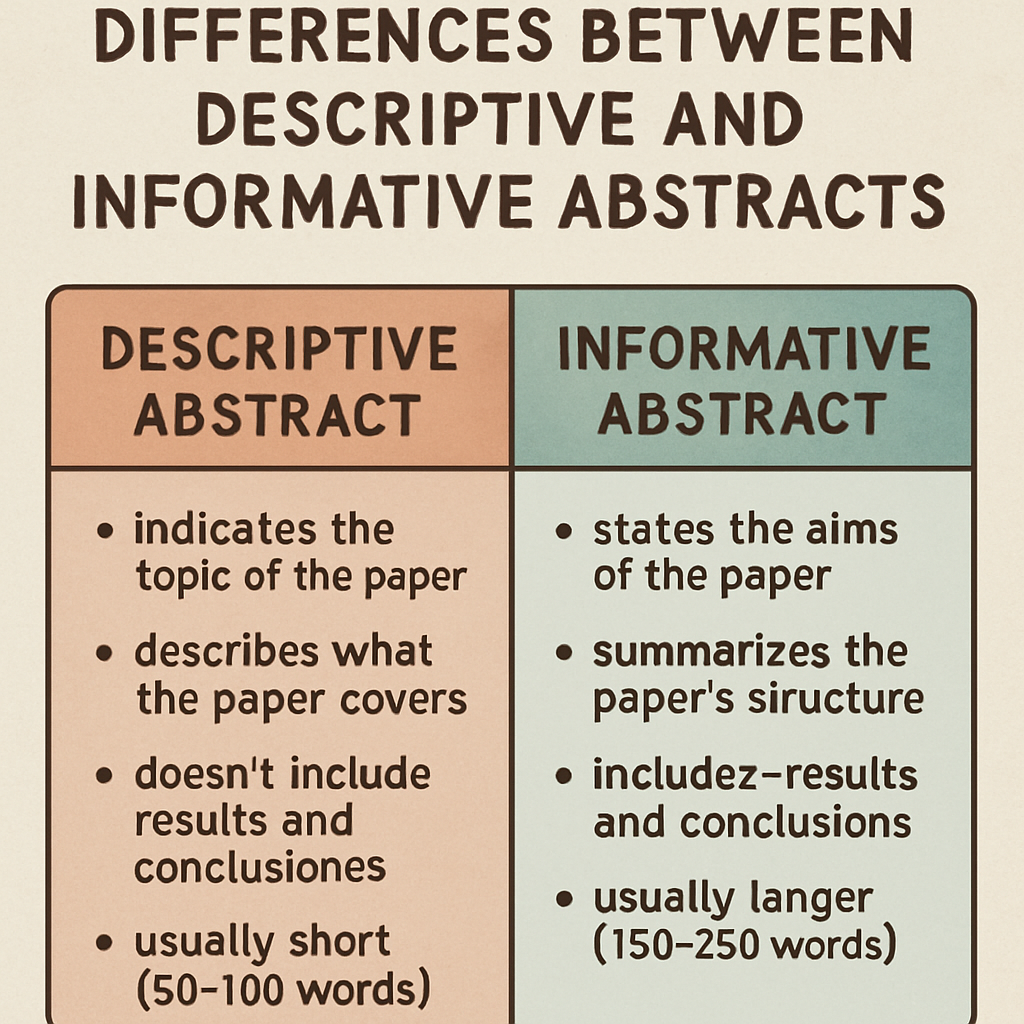Writing an abstract for a research paper proposal is a crucial skill. It serves as a concise summary of your work. An effective abstract can capture the essence of your research. It provides a snapshot of your study's purpose, methods, and findings. Crafting a compelling abstract requires clarity and precision. It should be engaging and informative, drawing readers into your research. Abstracts are often the first part of a proposal that reviewers read. A well-written abstract can significantly impact the acceptance of your proposal. Understanding the structure and elements of an abstract is essential. This guide will walk you through the process step-by-step. By the end, you'll know how to write an abstract that stands out. You'll also see abstract examples and learn how to write an abstract in APA format.
An abstract serves as a brief overview of an essay's key points. Its purpose is to summarize the argument effectively. Typically, abstracts are placed after the title but before the main content of an dissertation. If you're tasked with writing an abstract, consult your instructor for placement instructions. Here are some tips on crafting an abstract: Try not to copy large portions of text from your essay, especially the opening paragraph. Since an abstract often comes right before the dissertation, it could be the first thing your audience reads after the title. Copying verbatim from your essay's body is unnecessary, so avoid it in the abstract. View the abstract as an integral part of your work. Start strong. An abstract should function as a condensed version of your essay and start with a clear statement of your main argument within the first couple of sentences. Abstracts can vary in length, but targeting five to seven sentences is a good goal. Most of the abstract should summarize your evidence and findings. Use simple syntax. While thesis might accommodate longer sentences and complex expressions, keep abstracts concise with no place for elaborate grammar. Conclude with a sentence or two summarizing findings and potential future research directions. Like the introduction, the conclusion should be direct and engaging to spark interest in the essay.
An abstract summarizes your paper or research project. It is distinct from an introduction and should focus on key points. It needs to explain the significance of your work, outline your research methods, and present your conclusions. Generally, an abstract is around 250-300 words long. However, for OUR symposia, the limit is 250 words.
What Is an Abstract and Why Is It Important?
An abstract is a brief summary of your research paper or proposal. It presents the core ideas of your study concisely. Abstracts are typically 150-250 words long. The importance of an abstract cannot be overstated. It offers readers a quick overview of your research. A strong abstract can intrigue and engage your audience right away.
Abstracts serve several key functions:
- Summarize the main points of the research
- Present the research question or problem
- Highlight the methodology and key findings
- Showcase the significance of the study
Types of Abstracts: Descriptive vs. Informative
Abstracts can be categorized into two main types: descriptive and informative. Each serves a distinct purpose based on the level of detail required. Descriptive abstracts provide a snapshot of the research without extensive details. They outline the study's purpose, methods, and scope. However, they do not include detailed results or conclusions. This type of abstract is often used for shorter papers and articles. Informative abstracts, on the other hand, are more detailed. They cover all the crucial elements of the research, including results and conclusions. Informative abstracts give readers a comprehensive understanding of the study's impact.
Here's a quick overview of the differences:
- Descriptive: Purpose, methods, scope
- Informative: Purpose, methods, results, conclusions
Knowing the difference between these types can help you choose the right format for your research proposal.
Key Elements of a Research Proposal Abstract
To write a strong abstract for a research proposal, certain key elements should be included. These elements ensure the abstract is both informative and engaging. First, clearly define the research problem or question. This sets the stage for what follows and highlights the abstract's relevance. Next, outline the objectives of the study. These objectives provide a sense of direction and purpose. Briefly describe the methodology used. Highlight the techniques or approaches central to the research. This gives insight into how the study was conducted. Summarize the main findings or results. While details should be concise, it's crucial to convey the impact and significance of the outcomes. Finally, mention the implications or significance of the research. This element helps underscore the study's contribution to the field.
Key Elements Checklist:
- Research problem
- Objectives
- Methodology
- Main findings
- Implications
By including these elements, your abstract will offer a balanced, comprehensive overview that attracts the attention of editors and reviewers.
Step-by-Step Guide: How to Write an Abstract
Writing an abstract might seem daunting, but breaking it into simple steps can help. Start by revisiting your research paper to identify its key points.
First, summarize the research problem. This sets the stage and informs the reader why the study matters. Use clear and concise language to highlight this aspect.
Next, determine the purpose and objectives of your study. Consider what you set out to achieve and why these goals are significant. This part helps in framing the context for your research.
After that, describe the methods you used. Provide a brief overview of the techniques and approaches you employed. This offers insight into the research's rigor and validity.
List of Key Objectives:
- Define the problem
- State the purpose
- Highlight objectives
Move on to present the main findings of the research. Choose the most important results that best illustrate your research's significance. Keep it concise yet informative.
Then, discuss the implications of your findings. Explain what these results mean for your field of study. This section conveys the broader impact of your research.
Following these steps ensures a balanced and comprehensive abstract:
- Start strong with the research question.
- Present the objectives.
- Outline the methodology.
- Highlight main findings and conclusions.
- Discuss implications clearly.
Finally, review and refine the abstract. Ensure clarity, coherence, and conciseness. Seek feedback from peers or mentors to further enhance its quality. Drafting your abstract this way will help you create a powerful summary that stands on its own.
How to Write an Abstract in APA Format
Writing an abstract in APA format requires adherence to specific guidelines. These guidelines ensure consistency and professionalism.
Begin by keeping your abstract between 150 to 250 words. This helps in maintaining the required brevity while including all critical information.
Structure is key in APA formatting. Ensure your abstract includes the following components: the research problem, methods, results, and conclusion. This flow maintains the logical sequence, much valued in academic writing.
List of APA Format Guidelines:
- Adhere to word limit
- Follow structured format
- Use one paragraph
The APA format recommends one single, non-indented paragraph. Use concise sentences and the active voice. This approach helps in presenting the study with clarity and focus.
Make sure to include relevant keywords at the end of the abstract. These keywords enhance discoverability and should be chosen carefully. They reflect the primary themes of your research.

By adhering to these guidelines, you'll ensure your abstract aligns with APA requirements. This professional presentation will appeal to reviewers and contribute to the paper's accessibility in academic databases.
Common Mistakes to Avoid When Writing an Abstract
Crafting an effective abstract is crucial, yet writers often make common errors. Awareness of these mistakes can improve your abstract significantly.
One frequent error is including unnecessary details. This can clutter the abstract, causing it to lose focus. Ensure every sentence serves a clear purpose.
Another mistake is using jargon or technical language. This can alienate readers unfamiliar with specific terms. Keep the language simple and accessible.
List of Common Mistakes:
- Overloading with details
- Using jargon or technical terms
- Going off-topic
Avoid being vague about your research findings. Be specific and succinct. This specificity offers a clearer understanding for the reader. By sidestepping these pitfalls, you can create an abstract that is both clear and engaging.
Abstract Examples for Research Paper Proposals
Examining abstract examples can significantly aid in understanding how to construct a strong abstract. Whether you're a novice or seasoned researcher, comparing various abstracts unveils diverse styles and approaches.
Consider an abstract from a study in social sciences. It succinctly introduces the research problem, outlines the methodology, and concludes with the potential implications of the findings. This structure ensures the information flow is smooth and logical.
In contrast, an engineering abstract might focus heavily on methods and results. It would place less emphasis on the broader implications, yet it clearly highlights the specific outcomes of the research. This precise structure appeals to a technical audience.
Another compelling example comes from humanities. Such abstracts often emphasize the research question's context and the unique contribution to the field. They provide a brief analysis of results and maintain a narrative tone.
Analyzing various examples helps refine your writing. It aids in understanding the adaptability required depending on the discipline and audience. Over time, you learn to balance brevity with the necessity of providing a comprehensive summary.
Tips for Writing a Compelling Abstract
Crafting a compelling abstract requires skill and attention to detail. Focus on clarity and brevity to capture your reader's interest immediately. Ensure each word serves a purpose and adds value.
Begin with a strong opening sentence. This should clearly state the research topic and its significance. Avoid using jargon that might confuse readers.
Incorporate the following tips to enhance your abstract:
- Use active voice for a more engaging tone.
- Highlight unique findings to emphasize your research's contribution.
- Avoid unnecessary details that might clutter your main points.
Finally, revise your abstract to eliminate any ambiguities. A polished abstract not only reflects your research but also your commitment to excellence.
Final Checklist Before Submitting Your Abstract
Before you finalize your abstract, ensure it meets all criteria. A thorough review helps catch any issues and refine your work.
Here's a quick checklist to consider:
- Does the abstract summarize your main points?
- Are all sections, such as methods and conclusions, covered?
- Is the word count within limits?
- Have grammar and spelling been checked for errors?
Reviewing these points can significantly enhance the quality and impact of your abstract.
Conclusion
Crafting a well-written abstract is crucial for any research paper proposal. It serves as the first impression and often determines whether readers and reviewers will engage further with your paper. By following the guidelines provided, you can create an abstract that effectively communicates your research's essence and significance.
Remember, your abstract is not just a summary but a standalone piece that reflects the core of your research work. Aim for clarity, conciseness, and impact, ensuring your abstract aligns with the standards expected in academic writing.


